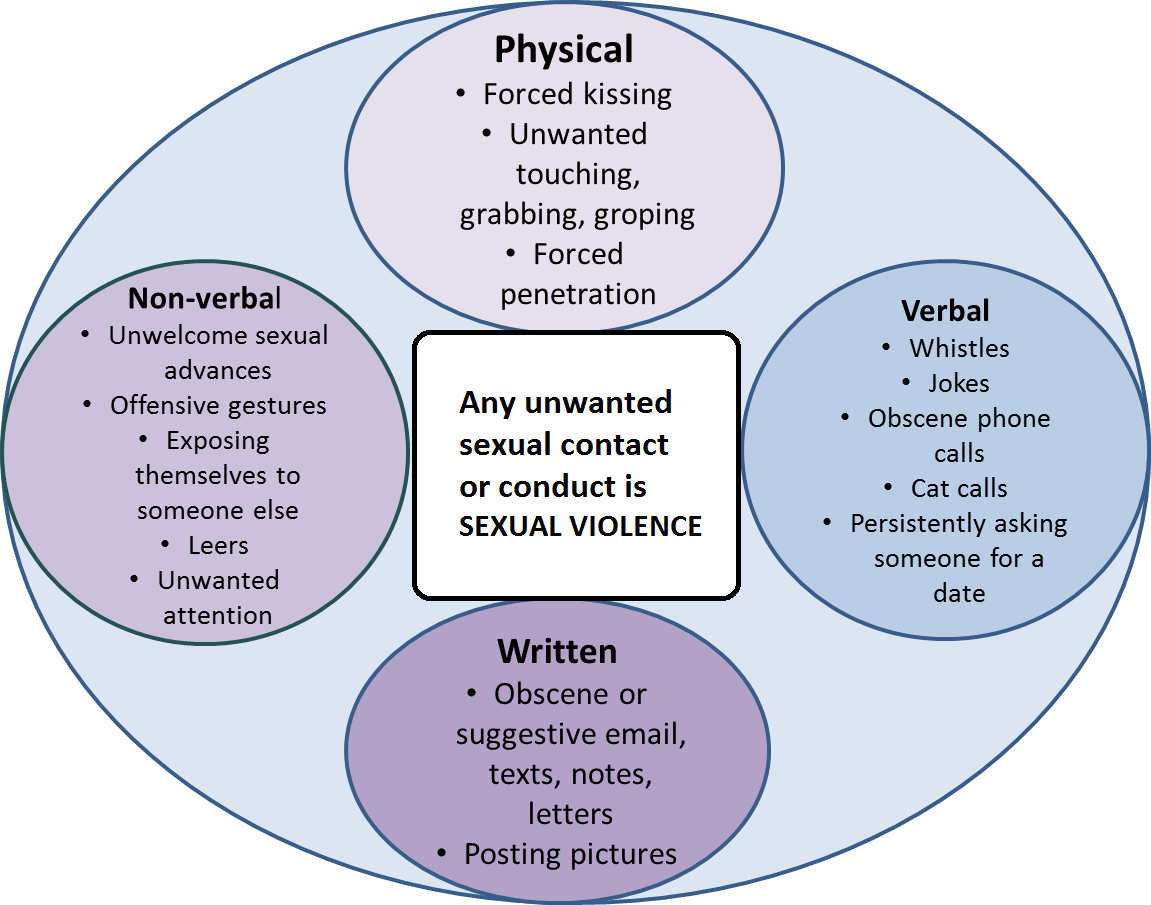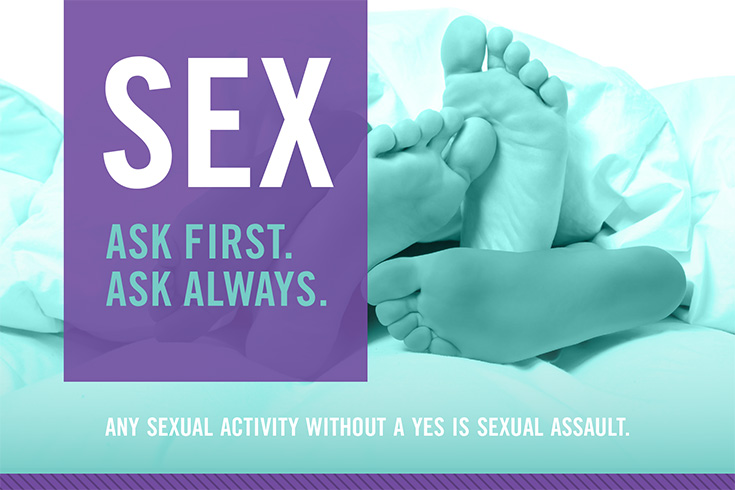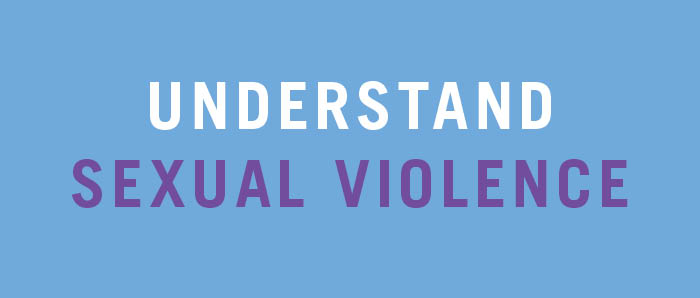Understand Sexual Violence
If you think someone is monitoring your devices, visit this website from another computer, tablet, or smartphone that isn't being monitored.
Click here to exit from this website, then delete it from your browser history. For more information, see techsafety.org.
We take all disclosures and reports of sexual violence seriously at the University of Winnipeg. Survivors of all backgrounds and experiences will be treated with dignity, respect, and care.
If you have experienced sexual violence, there are trained staff to help you in whatever way suits you best.
Sexual Violence is a term used to describe any unwanted sexual contact. This can include any physical or psychological act or behaviour that targets or attempts to target someone’s gender identity, expression, or sexuality without their permission. This includes a broad spectrum of behaviours that can include:
- Physical contact (forced kissing, unwanted touching or grabbing, and forced penetration)
- Verbal contact (whistles, jokes, obscene phone calls, catcalls, persistently asking someone out)
- Non-verbal contact (unwanted sexual advances, offensive gestures, exposing oneself to another, leers)
- Written contact (obscene or suggestive emails, texts, notes, letters, posting or sharing pictures without someone’s consent)
Sexual Harassment and Sexual Assault are two terms that are encompassed in Sexual Violence. Sexual Harassment is any unwanted sexual comments, advances, or threats; Sexual Assault is any unwanted physical sexual contact.

Consent is the active, ongoing, informed, knowing, and voluntary decision to engage in mutually accepted sexual activity. Basically, it’s asking permission to engage in any sexual conduct or activities. Here’s a few things to keep in mind about what consent means:
- Consent is never assumed or implied (you can’t guess at someone’s choice)
- Consent is not silence or the absence of “no” (just because they didn’t say no, doesn’t mean they want anything)
- Consent cannot be given if someone is incapacitated by alcohol or drugs, or is unconscious.
- Consent can never be obtained through threats or coercion (you can’t pressure someone to consent – they shouldn’t be fearing saying no)
- Consent can be revoked at any time (people are free to change their minds)
- Consent cannot be obtained if the perpetrator abuses a position of trust, power or authority (for example, a boss/employee, a professor/student, a coach/athlete)
- Consent is ongoing (agreeing to one activity does not mean agreeing to anything else, or activity at a later time)
- Consent should be an enthusiastic and excited “yes!” (Isn’t that what we’d all want to hear from an intimate partner, anyway?)
It’s the responsibility of the person who wants to engage in sexual activity to ask their partner(s) for consent – no matter what sort of relationship you may have together. If you’re ever unsure, just ask!

We live in a society where sexual violence is normalized and trivialized through certain ideas, social practices, and media. This is called Rape Culture. One major symptom of Rape Culture is that perpetrators may not be held accountable for their behaviour, and survivors may be blamed for their own abuse.
Examples of Rape Culture being perpetuated can include jokes, media images or depictions of violence or unhealthy relationships. This includes ad campaigns that portray acts of harassment or violence as funny or artful, or story lines that portray acts like stalking or repeatedly asking someone out as romantic acts rather than harassment. When these ideas are a “normal” part of what we view, it means acts of harassment and assault can be seen as normal, too. It also prevents people from coming forward with reports of violence, for fear not being believed, mocked, or even facing other forms of violence.
When we learn what Rape Culture means and how violence affects people, we help in making a change to our society. When we acknowledge our own attitudes and behaviours, we're also able to also point out the problems that others may need to work on. Acknowledging our own mistakes is the first step to correcting them.
We can use our knowledge to call out behaviour that perpetuates Rape Culture and Violence. Studies have shown that people are powerfully affected by peer attitudes toward sexual aggression, so it is important to contribute to a society that does not tolerate sexual violence.
(Thanks to the University of Alberta Sexual Assault Centre their permission to adapt their materials. You can find the full resource here).
Some behaviours to watch out for:
- Pressuring another person to do something they don't want to do;
- Making offensive jokes or comments, especially ones that are sexual in nature or target someone's gender;
- Acting possessive, extremely jealous, or aggressive towards someone;
- Any behaviour that just doesn't feel right to you
If you can intervene, here are some ideas on how to intervene:
DISTRACT: redirect the focus of either person in order to distract the perpetrator/give the target a way to remove themselves. This could mean making a joke, asking an unrelated question, or changing the subject in a conversation. This might not be addressing the behaviour, but it does provide a way out of an interaction for the target.
DIRECT: confront the behaviour as it happens. The target may be able to leave the situation, or the perpetrator may understand their behaviour is wrong. This could mean physically separating the individuals, using assertive language (“Stop! That’s not okay! Leave them alone!) or challenging jokes and language by telling the perpetrator that you don’t think their jokes are funny. You can also address the targeted person to make sure they are okay (“Are you okay? Do you need help? Can I call someone?”)
DELEGATE: Ask others, like your friends, a supervisor at work, or a bouncer at a club, to help stop the behaviour. They may be better situated to stop the behaviour, especially if you do not feel safe intervening by yourself.
(Thanks to Concordia University for their permissions to adapt their materials. You can find the full resource here).
Intersectionality is a term coined by legal scholar Kimberleé Crenshaw. Originally, it was used to describe the intersections in oppression that Black women faced based on their identities as both women and as people of colour, specifically as it relates to their exclusion in feminist movements and politics. Intersectionality is now understood to include more experiences. In general terms, intersectionality is used to describe the interconnections of different identities and oppressions. Gender identity and expression, race, ethnicity, religion, social class, ability, sexuality, and immigration status all impact the way people experience the world, and are treated by others. Systems of power such as sexism, racism, colonialism, homophobia, transphobia, ableism, xenophobia, classism, etc can impact a person simultaneously, either giving people power or taking it away.
Though we acknowledge that sexual violence can happen to anyone, it’s important to recognize that some people may experience sexual violence at higher rates. This is largely due to those systems of power – sexual violence is not about attraction, it’s completely based on power. Those who have less power are often targeted by those with more.
Q: If someone doesn’t report to the police, it wasn’t really sexual assault.
A: Just because someone doesn't report the assault at the time, or report it later, doesn’t mean that it didn’t happen. Fewer than one in ten victims report the crime to police, largely due to fear of not being believed, mocked, or even facing retaliation from their attacker.
Q: It’s not a big deal to have sex with someone if they’re incapacitated by alcohol or drugs, or passed out.
A: If a person is unconscious or incapable of consenting to sex due to the use of alcohol or drugs, that person cannot legally give consent. Without consent, it is sexual assault.
Q: If they aren’t crying or visibly upset, it probably wasn’t serious at all.
A: Everyone responds to trauma differently – physical, emotional, and psychological impacts may not be visible at all. Regardless of what you may see, behaviour is not an indicator of experience.
Q: If it really happened, it would be easy to recount all the facts in the proper order.
A: Shock, fear, embarrassment, and distress can all impair a person’s memory. Many survivors may try to minimize or forget the details of an assault in order to cope with the trauma. Memory loss is also common when drugs or alcohol are involved.
Q: People lie and make up stories about sexual assault.
A: The number of false reports for sexual assault are very low, consistent with the number of false reports for other crimes in Canada. Sexual assault carries such stigma that many people would prefer not to report, let alone make a false report.
Q: It wasn’t penetration, so it wasn’t sexual violence.
A: Any unwanted sexual contact or conduct is sexual violence. A survivor can be severely affected by any form of sexual violence. Many forms of violence don’t involve any physical contact (stalking, sharing photos, etc), but they still carry trauma for the people who experience them.
Q: If I’m in a relationship/married to someone, I don’t need to ask permission to have sex with them.
A: Everyone has the right to say no to sexual activity. You should always ask if someone wants to engage in sexual activity, even if you’re in a relationship with them.
Q: Most people who commit sexual violence are strangers to the people they target.
A: 82% of sexual assaults are committed by individuals that are known to the survivor: a partner or ex, a friend, a family member, a neighbour, classmate, colleague, or acquaintance. (Statistics Canada, 2008)
(Adapted from Western University’s Upstander presentation materials, 2014)
The Birds and the Bees NS: What is Rape Culture?
This video explains Rape Culture, the behaviours and ideals in Rape Culture, and challenging Rape Culture. YouTube
College Humor: What if bears killed one in five people?
This video uses humor to challenge rape culture and victim-blaming behaviour. YouTube
TED: Violence against Women - it's a men's issue.
Jackson Katz's TEdtalk on why Violence against Women is seen as a "women's issue" and shifting it back to a "men's issue." This includes systems of power like the patriarchy and institutions that perpetuate these issues. YouTube
Chescaleigh: Sometimes You're a Caterpillar.
This video is an animated cartoon describing intersectionality and privilege. YouTube
Western University: Cycling Through Consent.
This video is an animated cartoon comparing consent to riding a bike. YouTube

